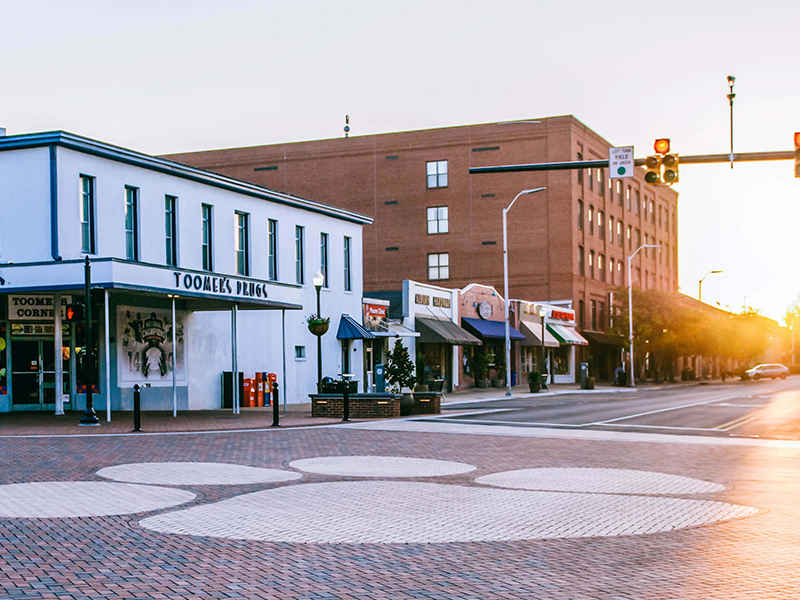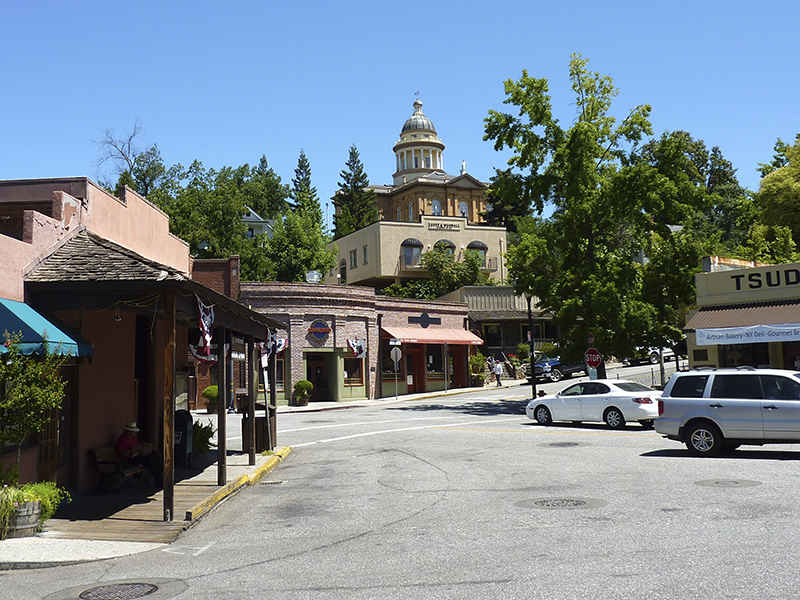Inhabited in antiquity by the Creek, the land on which Auburn sits was opened to settlement in 1832 with the Treaty of Cusseta. The first settlers arrived in the winter of 1836 from Harris County, Georgia. These settlers, led by Judge John J. Harper, intended to build a town that would be the religious and educational center for the area.
Auburn was incorporated on February 2, 1839, in what was then Macon County, covering an area of 2 square miles (5.2 km2). By that time, Methodist and Baptist churches had been established, and a school had been built and had come into operation. In the mid-1840s, separate academies for boys and girls were established in addition to the primary school. This concentration of educational institutions led to a rapid influx of families from the planter class into Auburn in the 1840s and 1850s. By 1858, of the roughly 1,000 free residents of Auburn, some 500 were students.
In 1856, the state legislature chartered a Methodist college, the East Alabama Male College in Auburn. This college, now Auburn University, opened its doors in 1859, offering a classical and liberal education.
With the advent of the Civil War in 1861, Auburn quickly emptied. All of the schools closed, and most businesses shuttered. Auburn was the site of a hospital for Texan Confederate soldiers, but only saw direct combat with the raids of Rousseau in 1864 and Wilson in 1865.

After the Civil War, Auburn's economy entered a prolonged depression that would last the remainder of the century. Public schools did not reopen until the mid-1870s, and most businesses remained closed. A series of fires in the 1860s and 1870s gutted the downtown area. East Alabama Male College was turned over to the state in 1872, and with funds from the federal Morrill Act was renamed Alabama Agricultural and Mechanical College with a new mission as a land grant college. Passage of the Hatch Act in 1887 allowed for expansion of agricultural research facilities on campus.
In 1892, the college became the first four-year college in Alabama to admit women. This, combined with increased interest in scientific agriculture and engineering and new funding from business licenses, allowed the city to start expanding again. By 1910, Auburn's population had returned to its antebellum level. SIAA Conference championships won by the Auburn college's football team brought attention and support to Auburn, and helped fill the city's coffers.

Fortunes were quickly reversed with the collapse of cotton prices in the early 1920s and the subsequent Great Depression a decade later. Due to these events, the state government became unable to fund the college, and—as Auburn's economy was completely derived from the college—residents were forced into a barter economy to support themselves.
Money began to flow into Auburn again with America's entry into World War II. Auburn's campus was turned into a training ground for technical specialists in the armed forces. After the war, Auburn was flooded by soldiers returning to school on the G.I. Bill.
Primarily due to this influx of students, Auburn began a period of growth that lasted through the 1950s and 1960s. A considerable amount of residential and business construction pushed Auburn's growth outside of the original boundaries of the city, leading to a series of large annexations which expanded Auburn to nearly 24 square miles (62 km2). Construction of Interstate 85 beginning in 1957 connected Auburn to the major cities of the state. This allowed for Auburn University (renamed in 1960) to schedule more home football games in Auburn rather than in larger cities, creating a strong tourism component in Auburn's economy. Auburn Mall opened as "Village Mall" in 1973.
Growth slowed somewhat in the 1970s, and a series of budget cuts made it clear that Auburn's sole economic reliance on Auburn University put the city in a tenuous position.
Backlash against what was seen as an ineffectual city council led to the election of Jan Dempsey as mayor in 1980 and the removal of the previous city government system in favor of a council-manager system. With a new government in place, the city began aggressively pursuing industry, leading to a nearly 1,200% increase in the number of industrial jobs over the next twenty years. As public satisfaction with the city administration reached record levels, Auburn began very rapid residential growth.
Historic Noble Hall, Auburn, Alabama. A series of reports in the 1980s and 1990s ranking the Auburn public school system among the top in the state and nation convinced thousands of new residents to move to Auburn over the past 25 years. Between 1980 and 2003, Auburn's population grew by 65%, and Auburn's economy expanded by 220%. With growth came issues of urban sprawl, which has become the primary political issue in Auburn at the turn of the 21st century.
We offer solutions for any moving needs. Our team is highly skilled in local moving, office moving, furniture hoisting, piano/pool table moving, packing, and so much more! Our facility is well equipped for for short and long term storage.